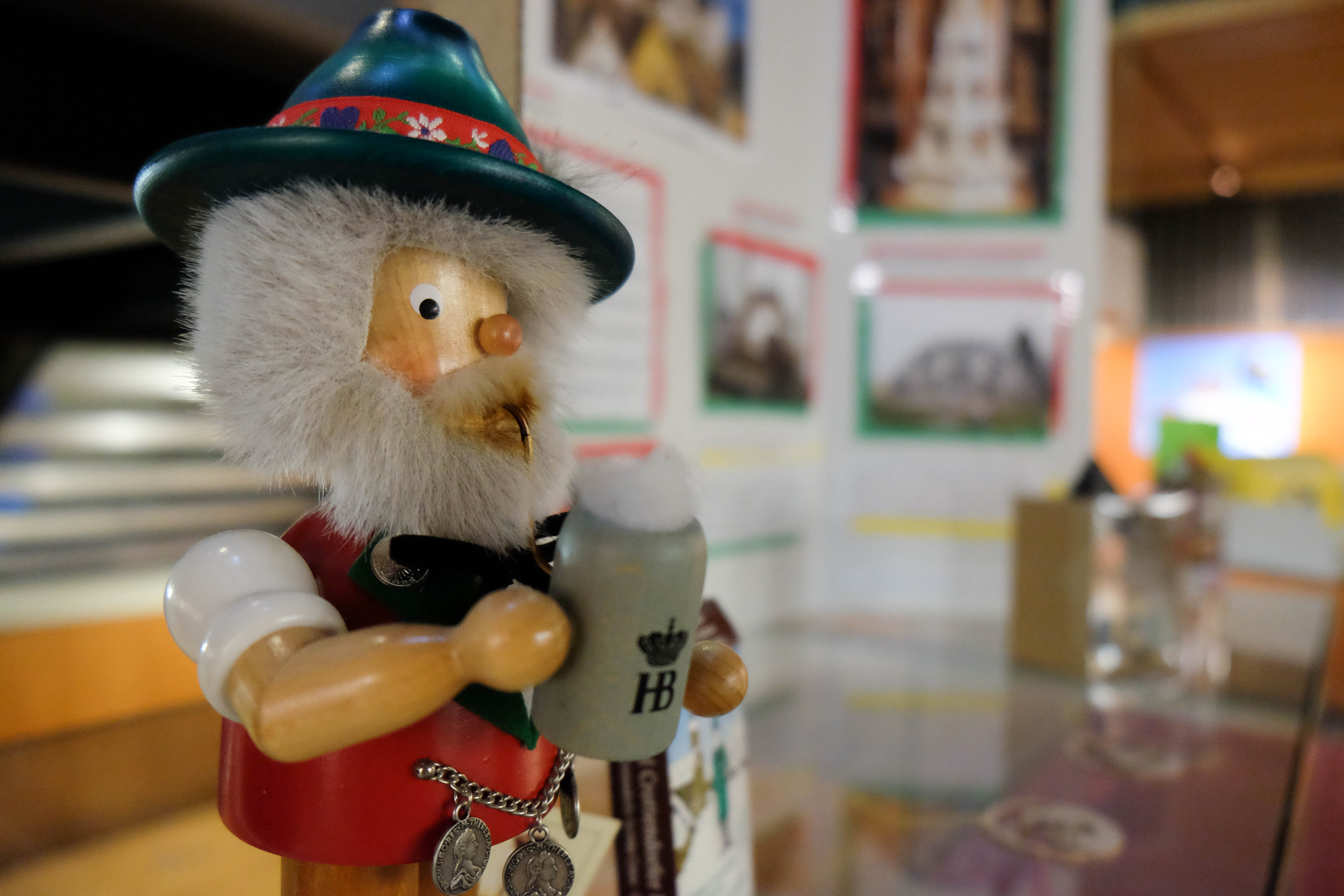Beyond sauerkraut and lederhosen: Unseen side of German culture on display
The smell of roasted almonds in Christmas markets, candles flickering in windows, notes from “Silent Night” drifting form churches — this is German culture to David Gamble.
“If I could have a Christmas in America, I would choose to have Christmas in Germany,” said Gamble, a sophomore majoring in environmental engineering. “It’s so grand and so spectacular.”
But most people don’t think of Christmas traditions when they picture German culture, he said. Most people think of sauerkraut, beer, soccer or lederhosen, said Claudia Schwabe, an assistant professor of German at Utah State University.
But there’s more to German culture, Schwabe said, and she wants others to see that through art.
The German Kultur Pur, or pure German culture, exhibit consists of projects from Schwabe’s class that don’t focus on stereotypical German culture and in a style not stereotypical of midterms.
“I wanted to give students creative reign over their projects,” she said. “They could write a song or poem, create a painting, make something digital, any skill really.”
The exhibit includes German fairy tales, handcrafted German Christmas ornaments and even Wolpertingers.
Similar to the mythical jackalope of North America, the mythical Wolpertinger of Bavaria, Germany, is a rabbit or squirrel with antlers, wings, duck feet and fangs.
Undeclared freshman David Horlacher first saw the stuffed replicas of the creatures while serving a mission for the Church of Jesus Christ of Latter-day Saints in Germany.
He said not even the locals seemed to know much about Wolpertingers, but there was one tale Horlacher said he came across while inquiring after the creature.
He said heard in order to see a Wolpertinger, a virtuous woman must walk into the woods alone with a man under the light of the moon.
Probably a scheme for lonely men to get dates, Horlacher said.
“It gets worse,” he said. “The way you catch one — it’s kind of inappropriate — but it’s said in the myth that the woman has to flash the animal, then it becomes dazed and confused. And that’s how you can catch them.”
While Wolpertingers are not real creatures, there is some truth behind their appearance. Shope papilloma virus causes tumors to grow on rabbits, often on their bodies. This causes the appearance of horns on the animal’s head and face, which may have have given rise to the Wolpertinger, Horlacher said.
“It’s actually really sad-looking, if you find a picture of that,” he said. “But they started this fable, this myth, from these animals.”
But not all the projects on display are mythical.
English senior Morgan Bronson knows a real part of German culture not many in America do.
During the time of the Berlin Wall, East Germany was separated from Western culture, she said. As a result, East Germans developed their own pop culture with icons like the red and green figure for “walk” or “don’t walk,” known as the ampelmann.
“It’s become this huge cultural thing, especially in Berlin,” Bronson said. “You can buy like t-shirts with him on it — wallets, key chains, anything you can think of you can probably, but an ampelmann on it.”
Food, music and even slow-driving cars called trabants, all are coming back in a nostalgia movement in East Germany, she said.
This is because when the Berlin Wall came down, not everyone found the culture of East Germany appealing.
“All the sudden when the wall came down, that’s not good anymore,” she said. “People made fun of them and so it’s kind of a reclaiming of that identity.”
The exhibit moves from the basement of the library to the International Lounge in the Taggart Student Center on Oct. 30.
Until then, some of the projects will be on display in the basement of the library from Oct. 26 to 29.
“My vision is to do this every year, that it gets bigger and bigger,” Schwabe said. “And that maybe we can enlarge it to not just the German section, but all classes, all languages could chip in so students really see what else is out there.”
— katie.l.lambert26@gmail.com or @klamb92

